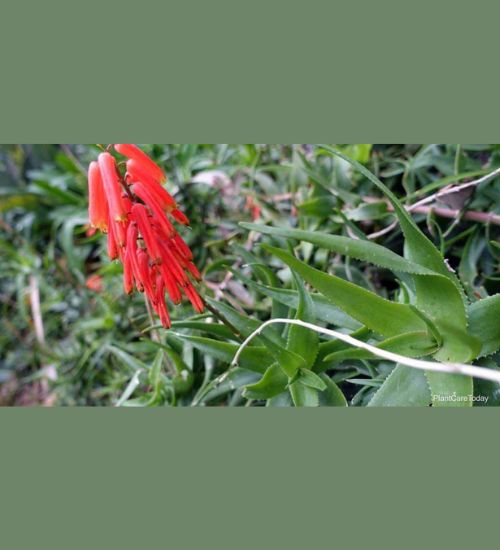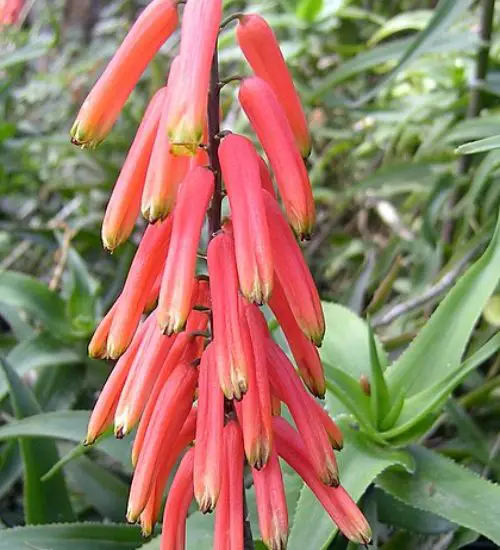Sun: full sun
Water: Below average watering needs for a succulent
Temperature: Zone 9a from 20° F to 25° F (-6.7 ° C to -3.9° C) to Zone 11b from 45° F to 50° F (7.2° C to 10° C)
Winter Survival: Not cold hardy
Propagation: cuttings
Flower: In the Spring
Flower Type: Red, Orange
Toxic: Can be toxic to humans and animals
Dormant: winter
Space Requirement: Indoors & Outdoors
Common Problems: Plants may rot if overwatered, pests
Where to buy Aloe Ciliaris?
Basc Care for Aloe Ciliaris
Watering
Can you water your succulent more than what its need? The answer is yes and no. In extreme conditions, you can water your plants more often when you notice the soil is completely dry.
One simple tip for you is that you can use some online apps to check the soil status before you go water your succulents. I would recommend the ThePlantsCheck app, it has some nice features there.
Fertilizing
Only feed this succulent during its active growing seasons which means winter. Use the right fertilizer applied in the right amounts. Applying half-strength balanced fertilizer every month or so is recommended for optimal results.
Do not fertilize during winter as the plant is dormant.
Sun & Location Requirements for "climbing-aloe"
Aloe Ciliaris needs at least six hours of direct sunlight every day in order to be healthy and happy. Place your succulent outdoors or near a sunny window, and check its leaves regularly – they should be bright green and firm. If the leaves start to look weak or pale, it's an indication that the succulent isn't getting enough sun.
As per this succulent profile, it is only able to stay healthy when the environment temperature is above the range of zone 9a from 20° F to 25° F (-6.7 ° C to -3.9° C).
In order to protect Aloe Ciliaris from freezing temperatures, it is important to provide adequate insulation and drainage. A layer of mulch or gravel will help protect the roots by keeping them warm during cold weather. In addition, protection from wind and sun exposure can help reduce the chances of frost damage.
Any succulents in the group will need a medium space to grow. You can place your pot at your table or window. Since this plant needs more space than mini succulents, you should consider do not plant them together with other succulents/plants.
Propagation
One way to propagate Aloe Ciliaris is by cutting
Toxicity

Aloe Ciliaris has high levels of calcium oxalate, a substance that is toxic to both humans and animals. Ingesting parts of this succulent can cause skin irritation, difficulty breathing, blurred vision and vomiting in severe cases. Keep children and pets away from ""climbing-aloe"" and regularly inspect for signs of damage or consumption.
Pests and Diseases
Aloe Ciliaris can be affected common pests and diseases like most of the other succulents such as aphids, mealybugs, and Red spider mites.
If you do spot any of pest signs, you can treat your succulent using below methods.
- Aphids: quarantine, clean infected plants, soapy water.
- Mealybugs: quarantine, clean infected plants, soapy water.
- Red spider mites: Quarantine, clean your infected plants, treatment with a systemic insecticidal/soapy water.
Besides that, to prevent serious health issues from happening, keep your succulent in a well-ventilated area and check it regularly for any signs of pests or health problems.


